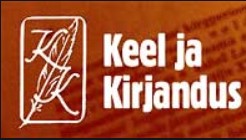Ecce genius
The article aims to explore the etymology and semantics of the word ‘genius’, its history, meanings and uses. The concept manifests itself as a human aspiration towards self-sufficiency, a desire to solve the mystery of the human ideal. The original antique meaning used to be ‘attendant spirit’, and as a genius could be either good or bad, the Middle Ages preferred speaking of guardian angels and demons, respectively. From the Late Middle Ages to the Early Renaissance the concept became increasingly associated with artists, particularly talented (‘ingenious’) poets. The 18th century introduces the idea of a modern artistic genius as a person standing out for God-given gifts, characterized by originality, confrontation with the rules and – most importantly – creativity. In the 19th century the word made a frequent appearance in philosophical debates. A semantic change was brought about by the first decades of the 20th century in connection with the rise of totalitarian ideologies associating the word with the cult of the leader. It is not before the second half of the 20th century that ‘genius’ found its way back to both literary and spoken language, but now as a common adjective or epithet applicable to a representative of any walk of life. In Estonian writing the word ‘genius’ made its first appearance in the late 19th century. In the early 20th century, we meet both the “genius of the Estonian people” and artists as ‘creative geniuses’. In Estonia, too, the term was transformed into “genius of the leader” and “genius of the Soviet people” during the Soviet occupation, and was not reused in the artistic context until the last decades of the 20th century.
More...


